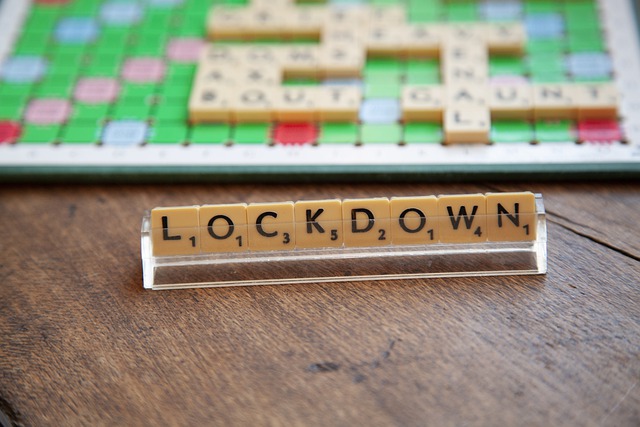
Published: October 16th, 2020 in Business,
What Is The Three-Tier System At Its Core
In response to rising numbers of Covid-19 infections across areas of the United Kingdom, Prime Minister Boris Johnson recently unveiled the three-tier lockdown system, which has frequently been described as a “traffic-light-style plan.” This system will separate localised areas of England into “local Covid alert levels.” These local alert levels will dictate what restrictions are to be enforced within the local areas — dependent on whether local alert levels are considered to be medium (tier 1), high (tier 2), or very high (tier 3).
Rates of infections across the country will apparently dictate what alert level local areas are placed on, with, as you would expect, those with the highest infection rates facing the most severe lockdown restrictions. This system will work largely in relation to the data gathered from the NHS Track And Trace app. At present, according to data published in The Guardian, 28% of the population across England current sit in tier 2, and 3% are in tier 3 — with Liverpool recently being amongst the first to face severe restriction as a result of their tier 3 alert level.
WHAT DOES EACH LEVEL MEAN FOR YOUR BUSINESS AND HOSPITALITY SECTORS?
While shops, universities, and schools will stay open throughout each tier in the new system, the same cannot be said for small businesses such as pubs and bars — with some restaurants feeling the sting as well.
For areas experiencing a tier 1 alert level, then this largely means that those within the area can still abide by the Rule of Six order both indoors and outdoors and that venues may remain open until 10 pm — provided that they adopt Covid-secure measures. This means bars, pubs, and other hospitality businesses may remain open until 10 pm, and that they may keep selling food off-premises after 10 pm provided that it is done so via delivery services or drive-thru. Nightclubs and adult entertainment premises, however, will still not be allowed to open under any circumstances. However, wedding receptions and funerals may continue with previously adopted restrictions on attendees.
During tier 2 alert levels, the Rule of Six guidelines will only apply to outdoor spaces and private gardens. This means that, although businesses selling food and drink can remain open in the same parameters as tier 1, people must not meet with anyone outside of their household or support bubble in such locations. This, combined with the 10 pm curfew, has had a considerable amount of small business owners concerned, and rightly so.
When an area faces a tier 3 alert, all pubs and bars must shut their doors; however, there are exemptions to locations that operate as restaurants that serve substantial meals — in which case, alcohol may be sold in accompaniment with a meal. In tier 3, the Rule of Six also only applies to open spaces such as public parks and beaches, meaning once again that those businesses who find themselves able to remain open will be affected regardless. Furthermore, businesses such as gyms, fitness/dance studios, betting shops, and casinos may also be ordered to shut their doors in tier 3 — as such businesses have already been experiencing closures across the Liverpool region. Finally, in tier 3, weddings will be completely banned, regardless of attendee figures.
There has been a lot of small business owners expressing particular concern over the vague nature of the restrictions placed on bars and pubs in higher tier lockdowns, with there being a lot of debate over what constitutes a meal which would permit a pub or bar to operate as a restaurant in such instances. And, with additional questioning of how much supposed autonomy individual local authorities will have on the restrictions, the natural worry is that for some people this new system seems, well, vague.
More guidelines are expected to follow regarding the specificities of restrictions for pubs, bars, and restaurants experiencing a tier 3 alert level, according to The Guardian, but the fact that this has been rolled out without those specificities in place has left a lot of business owners feeling understandable abandoned. Responses from small business owners across England have ranged from repugnance to beleaguered acceptance, with Paul Cherpeau, Chief Executive of the Liverpool Chamber of Commerce, telling Business Insider that business across the city was “bewildered, frustrated and angry,” by the governments newest system.
HOW LONG WILL THIS SYSTEM BE IN PLACE?
As the tier system is in place to supposedly help reduce the number of coronavirus cases and alleviate the pressure on the NHS, the amount of time that a local area may remain in a tier 3 lockdown will likely depend on information gathered from the NHS Track And Trace app, the number of cases in both local areas and England as a whole, as well as the UK’s rate of infection. Therefore, it may be impossible to place specific timeframes on the duration that tier 3 lockdowns will last for, however, reviews are supposedly to be carried out every couple of weeks.
WHAT IS THE NEXT STEP FORWARD FOR BUSINESS OWNERS?
Sadly, the difficult period of time for certain small businesses may be far from over. And, while the uncertainty of the journey ahead for small business owners may seem disheartening, the Financial Management Centre may be able to offer specific advice or support for your business in some way, so please feel free to call 0333 202 7198, email us at info@tfmcenter.co.uk, or get in touch with us via our website.




